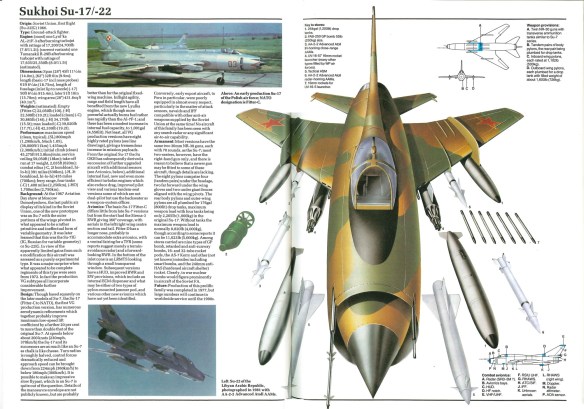
Soviet aircraft builders display great ingenuity in wringing every last ounce of performance from existing machines. The long-lived Su 17 is such an example, and it continues to be upgraded and employed long after the basic design became obsolete.
In 1956 the Sukhoi design bureau created its first tactical jet bomber, the Su 7, a modern-looking machine built in large numbers to offset its relative simplicity. It was a capable fighter-bomber and ruggedly built but also somewhat underpowered. Moreover, it suffered from long runway rolls and rather short range. In 1967 the Sukhoi bureau decided to upgrade this family of bombers by adding variable-geometry wings to enhance takeoff, landing, and load-carrying abilities. Early on it was judged impossible to fit wing-retracting equipment into the narrow fuselage, so engineers compromised by making the wings pivot midway along their length. The added lift increased the Su 7’s takeoff performance, and operational radius and ordnance payload were improved as well. Commencing in 1971 the new Su 17 became operational in large numbers, and they were deployed by Warsaw Pact allies and Soviet client states. It has since received the NATO designation FITTER.
During the past three decades, the basic Su 17 design has undergone numerous modifications and upgrades that render this marginally obsolete machine still useful as an attack craft. The latest variant, the Su 17M, is distinguished by a close-fitting clamshell canopy with a high spine ridge running the length of the fuselage. The tail fin is also somewhat taller and employs a single airscoop at its base. This model has been exported abroad as the Su 22, with somewhat lowered-powered avionics, but otherwise it remains an effective bombing platform. After the breakup of the Soviet Union in the late 1980s, many former Warsaw Pact countries were eager to unload their aging Sukhois, but Russia alone seems content to maintain its stable of 800-plus Su 17s. Their rugged design, combined with good reliability and performance, ensures a long service life.